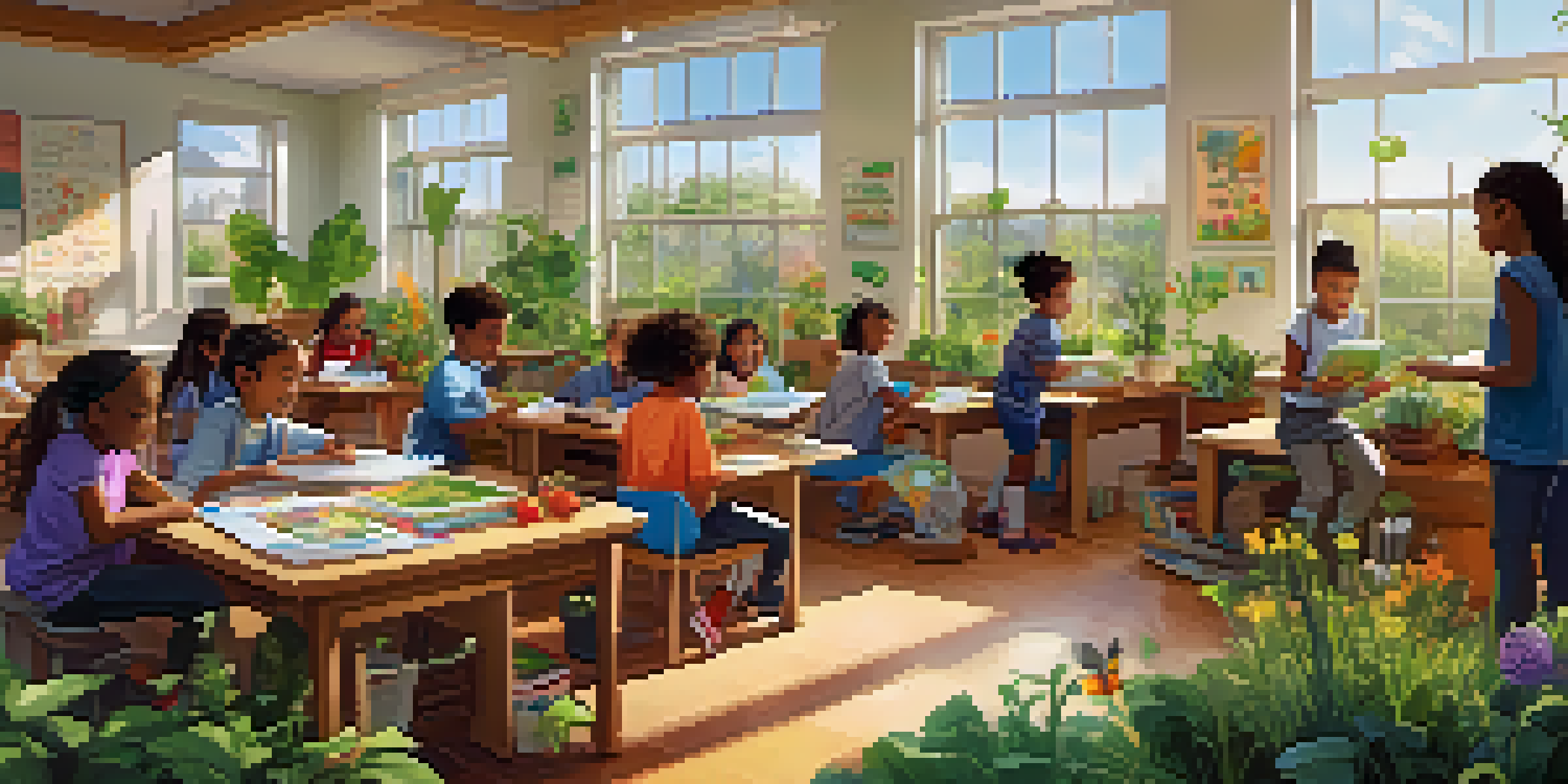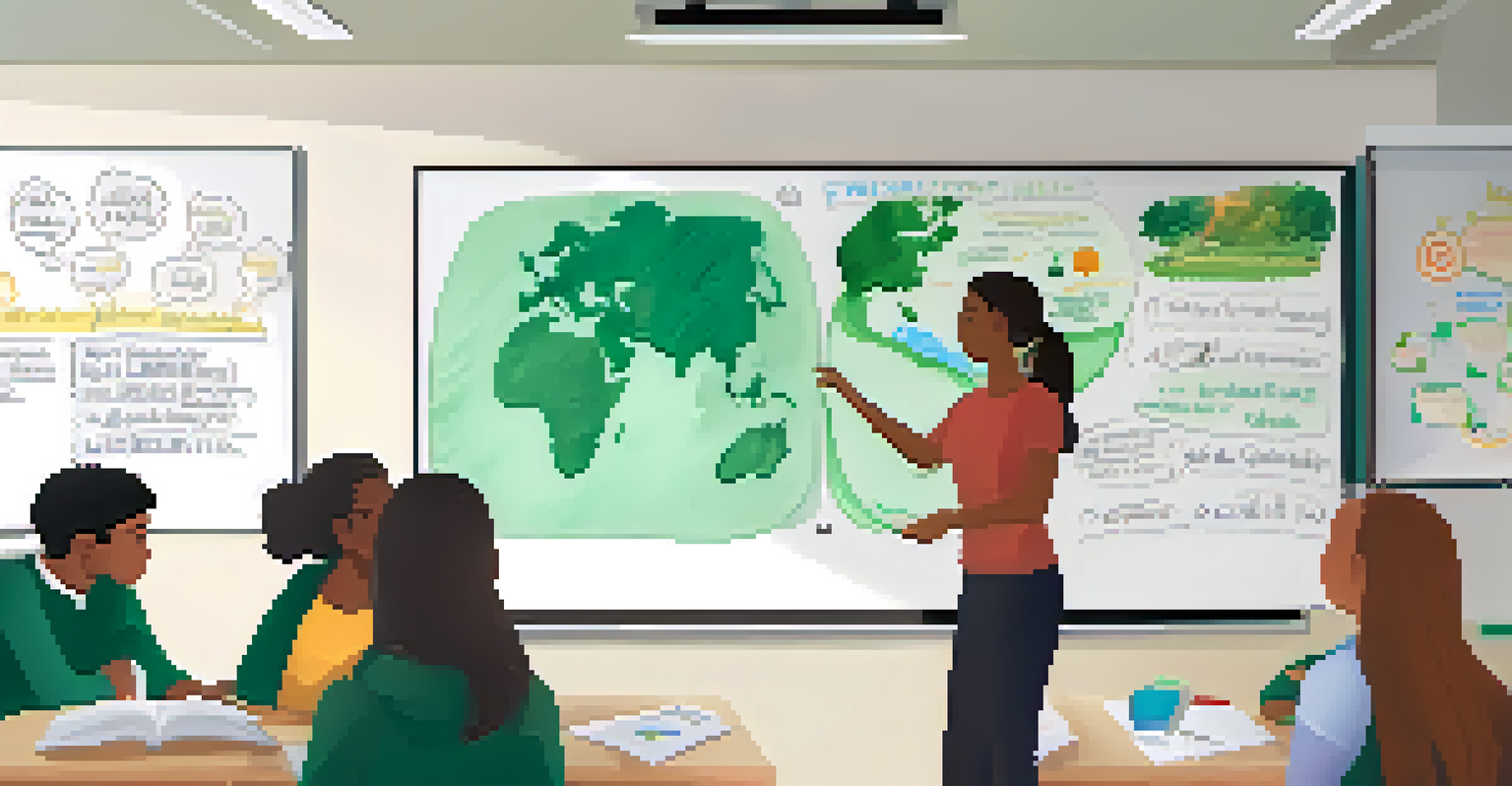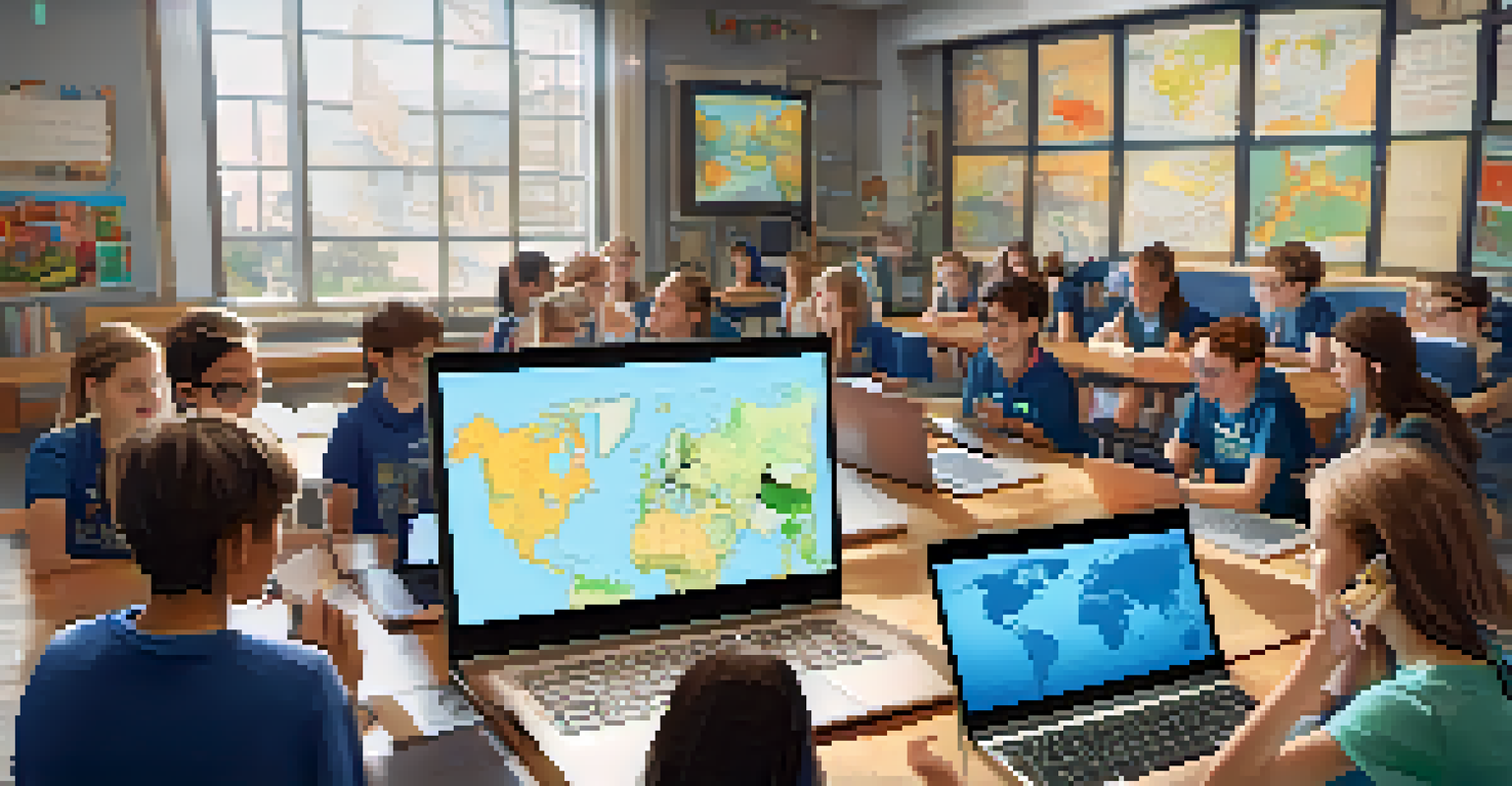Incorporating Real-World Applications in Learning Design

Understanding the Importance of Real-World Applications
Incorporating real-world applications in learning design bridges the gap between theory and practice. This approach allows students to see the relevance of what they are learning in their everyday lives. When students can connect academic concepts to real-world scenarios, they are more likely to engage deeply and retain information.
Education is not the filling of a pail, but the lighting of a fire.
Consider a math lesson that teaches geometry through the design of a park. Instead of just calculating area and perimeter, students can visualize and apply these concepts in a tangible project. This kind of application not only makes learning more engaging but also enhances critical thinking skills.
Ultimately, understanding the importance of real-world applications transforms the educational experience. It encourages learners to think innovatively and prepares them for challenges they might face outside the classroom.
Identifying Relevant Real-World Scenarios
The first step in incorporating real-world applications is identifying relevant scenarios for your learners. Begin by understanding the interests and future aspirations of your students. For example, if they're interested in environmental science, using case studies about local conservation efforts can make lessons more relatable.

Engage in discussions with students to uncover their experiences and interests. This can lead to valuable insights about what scenarios will resonate most with them. By aligning learning goals with their real-world context, you're setting the stage for meaningful education.
Real-World Learning Enhances Engagement
Incorporating real-world applications into education makes learning more relevant and engaging for students.
Additionally, consider reaching out to professionals in various fields for input. Their experiences can provide fresh perspectives on how theoretical concepts are applied in practice, enriching the learning design even further.
Integrating Technology for Enhanced Learning
Technology plays a vital role in connecting classroom learning with real-world applications. Tools like virtual simulations, online collaboration platforms, and interactive software allow students to engage with content in innovative ways. For instance, using a simulation game to manage a business can provide learners with practical knowledge about economics and decision-making.
Tell me and I forget. Teach me and I remember. Involve me and I learn.
Moreover, technology can facilitate access to a wealth of resources and expert insights. Students can participate in virtual field trips, attend webinars with industry leaders, or even collaborate on projects with peers worldwide. This exposure broadens their understanding and prepares them for global challenges.
By thoughtfully integrating technology, educators can create dynamic learning experiences that extend beyond traditional methods. This not only enhances engagement but also equips students with skills they will need in a tech-driven world.
Designing Project-Based Learning Experiences
Project-based learning (PBL) is an effective method for incorporating real-world applications into education. In PBL, students work on a project over an extended period, which culminates in a tangible outcome. For example, students could design a sustainable community garden, applying science, math, and teamwork skills.
This hands-on approach encourages collaboration and problem-solving, mirroring the dynamics of the real world. Students learn to navigate challenges, manage their time, and communicate effectively—all essential skills for future success. Plus, the sense of accomplishment from seeing their project come to life is incredibly rewarding.
Technology Enhances Learning Experiences
Utilizing technology allows students to interact with content in innovative ways, broadening their understanding of real-world applications.
Ultimately, PBL fosters a deeper understanding of content while making learning relevant and enjoyable. It allows students to take ownership of their education and cultivate a passion for lifelong learning.
Encouraging Critical Thinking and Problem Solving
Real-world applications inherently encourage critical thinking and problem-solving skills. When faced with authentic challenges, students must analyze information, evaluate options, and make informed decisions. This is not just about finding the right answer; it's about understanding the process and reasoning behind their choices.
For instance, a science class might explore climate change by having students devise solutions for their local community. This requires them to research, brainstorm, and test their ideas, honing their analytical skills along the way. The process of grappling with complex issues prepares them for similar challenges in their future careers.
By fostering these skills through real-world applications, educators empower students to become proactive thinkers and effective problem solvers. These traits are invaluable in both professional and personal contexts.
Assessment Strategies for Real-World Learning
When incorporating real-world applications into learning, assessment strategies need to evolve as well. Traditional tests may not adequately capture a student's understanding of applied knowledge. Instead, consider using project assessments, presentations, and peer evaluations to gauge their grasp of concepts.
For instance, if students create a marketing plan for a local business, evaluating their plan's effectiveness provides insight into their learning. This type of assessment not only measures their knowledge but also their ability to apply it in a practical context. Providing feedback on their process can further enhance their learning experience.
Project-Based Learning Fosters Skills
Project-based learning encourages collaboration and critical thinking, equipping students with essential skills for future success.
Ultimately, thoughtful assessment strategies validate the importance of real-world applications in education. They encourage students to reflect on their learning journey and recognize the value of their experiences.
The Role of Educators in Facilitating Real-World Learning
Educators play a crucial role in facilitating real-world learning experiences. They are not just providers of information; they are guides who help students navigate complex topics and apply their knowledge. By creating a supportive environment, teachers can encourage students to explore, ask questions, and engage with real-world challenges.
Moreover, educators can foster community connections by collaborating with local organizations. This could involve inviting guest speakers, arranging internships, or partnering on projects. These connections enrich the learning experience and provide students with valuable insights from professionals in their desired fields.

In essence, educators are the catalysts for real-world learning. By embracing this role, they empower students to take charge of their education and prepare them for an ever-changing world.